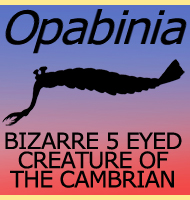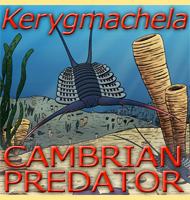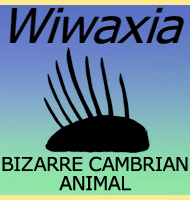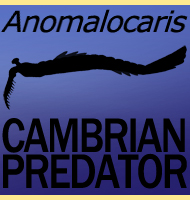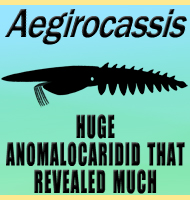


Canadia
Name: Canadia
(Canada).
Phonetic: Can-ah-dee-ah.
Named By: Charles Doolittle Walcott - 1911.
Classification: Animalia, Lophotrochozoa,
Annelida, Polychaeta.
Species: C. spinosa.
Diet: Detritivore/Carnivore.
Size: Between 5 - 20 centimetres long.
Known locations: Canada, British Columbia -
Brugess Shale.
Time period: Delamaran of the Cambrian.
Fossil representation: Many individual specimens.
Canadia
is probably known best today because another and very strange Cambrian
creature called Hallucigenia
was once included within the Canadia genus
until it was recognised to being different and separated in 1977.
Classification
of Canadia has in the past been problematic because
many of the
creatures it was often associated with have since had their
clasifications changed. The only confirmed location for Canadia
is
within the Polychaeta, as evidenced by the presence of parapodium,
paired unjointed growths from the side of its body. Further
refinement of this position cannot be agreed upon however because it is
still uncertain how Canadia relates to modern
annelids.
Canadia
had the overall appearance of a polycheate worm, as you might expect
from its classification. As such, Canadia had
notosetae (rigid
setae or ‘bristles’) that rose up from the back. These notosetae
have the presence of what appear to be diffraction gratings present
that would suggest that they were iridescent in life. These notosetae
would have also been the main form of propulsion, allowing Canadia
to
swim through the water. However, Canadia
probably searched for food
on the seafloor with the small tentacles that extended from the
prostomium (first body segment) seemingly serving as sensory
devices.
Canadia
is often classed as a detritivore, a bottom feeder that processes
organic matter from the sediment, similar to an earthworm in your
garden. However Canadia is thought to have
potentially been
carnivorous because the gut was straight with the presumed ability to
extend out in a proboscis, a feature that is seen in some polychaete
worms. The gut also displays a lack of sediment, something that
should have filled its gut if Canadia was just a
detritivore. Canadia
may yet turn out to be a predator of other soft bodied organisms.
----------------------------------------------------------------------------
Random favourites
 |
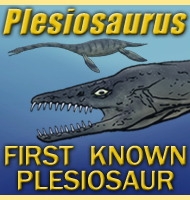 |
 |
